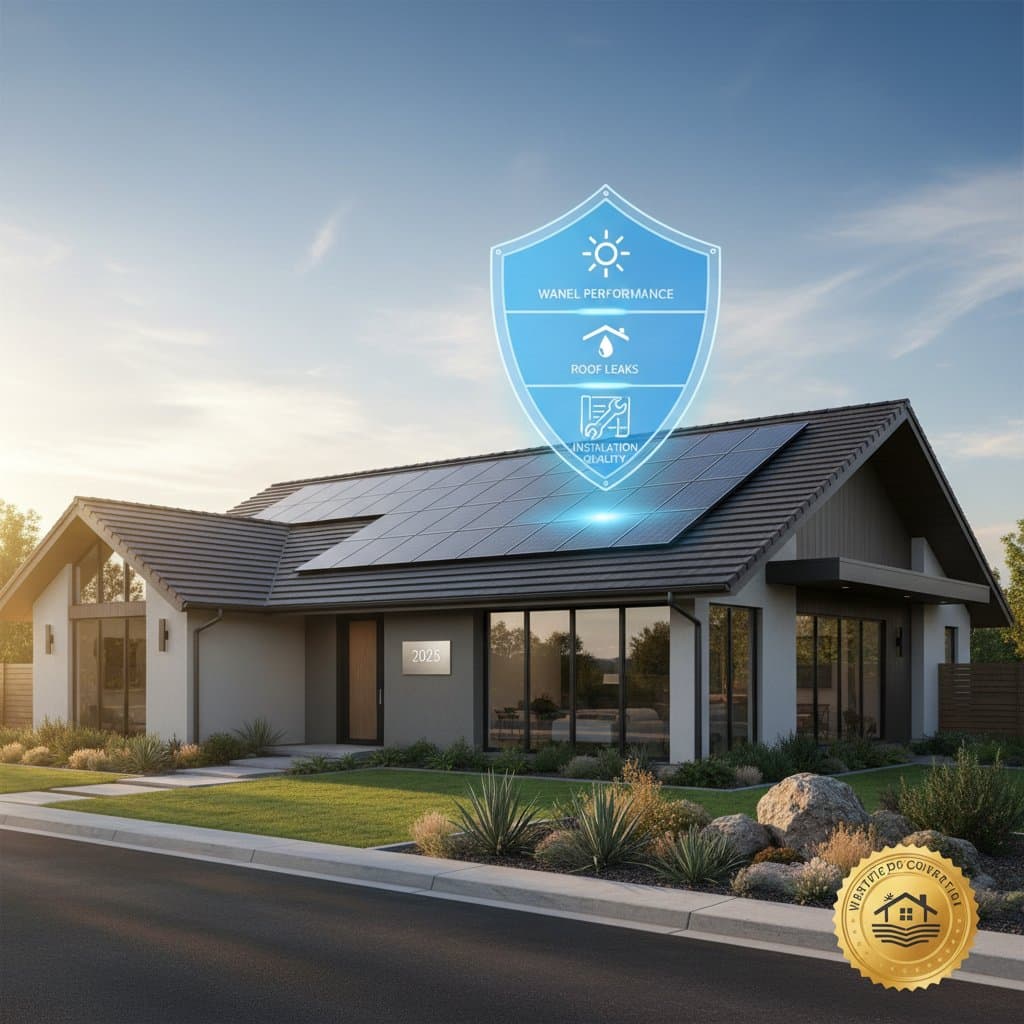Coverage Basics for Solar Roofs Under Home Warranties
Homeowners installing solar roofs seek assurance that warranties safeguard both the energy-generating panels and the underlying roof structure. A solar roof integrates photovoltaic panels with durable roofing materials to deliver power while shielding the home from elements. Warranties address energy output reliability alongside structural integrity. This overview details standard protections, limitations, comparison strategies, and options for enhanced coverage.
Advantages, Drawbacks, and Ideal Applications
Advantages
- Shields against early panel degradation or roof material breakdowns.
- Maintains consistent energy generation over extended periods.
- Minimizes expenses related to repairs for issues like leaks, fractured tiles, or inverter malfunctions.
- Boosts property value through transferable coverage in typical scenarios.
Drawbacks
- Terms often divide across solar and roofing providers.
- Expenses for panel removal and reinstallation during service might fall outside coverage.
- Claims frequently demand evidence of ongoing upkeep.
Ideal Applications
Full solar roof warranties suit long-term residents in sunny climates who prioritize stable upkeep expenses. Such coverage proves less beneficial for those planning to sell properties prior to recouping solar investments.
Detailed Process: Operating Solar Roof Warranties
Follow these steps to navigate warranty activation and claims effectively.
- Examine foundational protections. Review documentation from solar and roofing manufacturers, as each typically confines liability to its components.
- Complete system registration. Submit online within 30 to 60 days post-installation to activate terms.
- Maintain upkeep documentation. Retain records of inspections and cleanings, essential for validating claims.
- Submit claims promptly. Notify providers immediately upon detecting leaks or reduced output to prevent invalidation.
- Gather performance evidence. Compile inverter logs or utility statements demonstrating efficiency losses.
- Anticipate site evaluation. Expect a dispatched technician from the manufacturer or installer to confirm problems.
- Execute resolutions. Upon approval, providers supply replacement panels, sealants, or wiring without charge, though removal labor may incur fees.
Common Errors Leading to Warranty Invalidations
Claims often fail due to avoidable oversights. Steer clear of these pitfalls to preserve protections.
- Applying unapproved cleaning agents that damage panel surfaces.
- Attaching items like satellite antennas or seasonal lights directly to panels.
- Neglecting to prune overhanging branches that block sunlight.
- Allowing minor leaks or rust to escalate unchecked.
- Substituting inverters or optimizers with incompatible alternatives.
Consult installers prior to any alterations. Minor adjustments, such as wiring tweaks, qualify as unauthorized interventions.
Guidelines for Professional Versus Self-Managed Warranty Handling
Apply this decision framework, termed the Warranty Management Gate, to determine handling approaches.
| Factor | Self-Managed Suitability | Professional Recommendation |
|---|---|---|
| Expertise Level | Routine cleaning and surface assessments | Advanced electrical evaluations or panel handling |
| Hazard Potential | Minimal for ground-level or basic tasks | Elevated for energized systems or heights |
| Equipment Needs | Standard hose, soft brush, safety tether | Specialized tools like multimeters or torque devices |
Self-managed tasks work well for superficial maintenance and inspections. Engage professionals for diagnostics, leak investigations, or warranty repairs. Unauthorized self-repairs risk nullifying coverage.
Pre-Commitment Preparation Checklist
Verify readiness with this comprehensive list before finalizing warranties.
| Area | Essential Elements |
|---|---|
| Equipment | Flashlight, stable ladder, documentation camera, monitoring application |
| Competencies | Fundamental roof evaluation, elementary electrical knowledge |
| Protection | Harness for falls, protective gloves, impact-resistant eyewear |
| Authorizations | Approvals for electrical, building, and grid connections |
| Initial Actions | Remove surface obstructions, assess structural supports, confirm electrical capacity |
| Environmental Factors | Select unshaded zones, ensure proper airflow, secure network for system oversight |
Framework for Evaluating Warranty Options
Assess potential warranties using this three-element approach prior to purchase or renewal.
- Component Quality: Opt for high-output panels and robust underlayments, which typically extend warranty durations.
- Service Demands: Account for elevated costs on complex roofs; confirm inclusion of labor provisions.
- Location Challenges: Factor in access difficulties for isolated properties, watching for uncompensated travel charges.
For new installations, request unified summaries from installers detailing integrated solar and roofing terms. Utilize the provided tables for direct comparisons.
Steps to Optimize Long-Term Solar Roof Protection
Secure maximum benefits by integrating warranties into a broader maintenance strategy. Schedule annual professional inspections to catch issues early and uphold claim eligibility. Explore extended plans that bundle solar and home coverage for streamlined protection. This proactive stance ensures sustained performance, cost savings, and peace of mind for your energy system.



